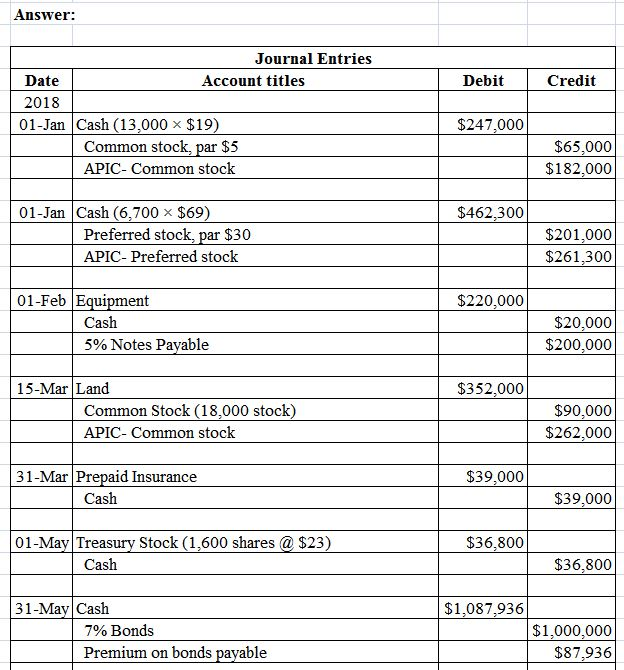
Equity financing is done by issuing common stock of the corporation. In simple words, it’s the receipt of the funds by selling business ownership. For instance, if the value of your business amounts to $100,000, a 10% stake can be sold for $10,000. On the other hand, debt financing is raised by issuing bonds, debentures, loan notes, commercial papers, deposit certificates, and other instruments. Outstanding shares are the total number of shares that the company issue to the market. Stock split is the process of dividing the current share number into multiple new shares to boost the stock liquidity.
Common stocks vs. preferred stocks
Common stockholders are paid last if a business liquidates, so there is a significant risk that they will lose all their money if a corporation goes bankrupt. One of the most common mistakes is making incorrect accounting entries. This can happen due to a lack of attention to detail or a misunderstanding of accounting principles.
To Ensure One Vote Per Person, Please Include the Following Info
- A good rule of thumb is to invest only what you can afford to lose, especially when you’re just starting.
- So, it may not be a cup of everyone’s tea to select appropriate investing securities.
- A separate Paid-in Capital in Excess of Par account is not needed.
Simply put, each share of common stock represents a share of ownership in a company. If a company does well or the value of its assets increases, common stock can go up in value. On the other hand, if a company is doing poorly, common stock can decrease in value. Shares of common stock allow investors to share in a company’s success over time, which is why they can make great long-term investments.
Common stock with paid in capital journal entry example
Without adjusting entries, financial statements may be misleading and inaccurate. For example, some companies have multiple classes of common stock. This enables raising needed capital but preserves the ability to control and direct the company.

Common stocks: what they are and why you should care
Adjustment entries can also impact a business’s stock-based compensation expenses. Allowance for doubtful accounts is an estimate of the amount of accounts receivable that may not be collected. To record the allowance for doubtful accounts, an adjusting entry is made to increase the allowance for doubtful accounts expense account and decrease the corresponding asset account. The matching principle is a fundamental accounting principle that requires expenses to be matched with the revenues they generated. Adjustment entries ensure that all expenses and revenues are recorded in the correct period, even if they were not initially recorded.
Common Stock vs. Preferred Stock on Balance Sheets
When the share has no par value, all the issuance prices will be recorded into the common stock. No, common stock is not a real asset because its value does not come directly from its physical properties. Common stock is a financial asset because it is a non-physical contract that confers an equity ownership stake in a company. Public companies need extra cash for many purposes, including upgrading production facilities, expanding into new markets, and pursuing acquisitions. One of the easiest ways to raise funding is through issuing common stock, which comes with both advantages and disadvantages when compared to taking out a traditional loan.
Common stock is primarily a form of ownership in a corporation, representing a claim on part of the company’s assets and earnings. Instead, as a shareholder, you own a residual claim to the company’s profits and assets, which means you are entitled to what’s left after all other obligations are met. A lag in recording transactions can also lead to incorrect financial statements.
In reality, par value is routinely set at the minimum possible amount, and is not even required under the incorporation laws of some states. One key thing to consider when choosing preferred stock is the dividend. Compare the dividends you’ll receive relative to the share price to determine if the yield offers an attractive return. The value of common stock issued is reported in the stockholder’s equity section of a company’s balance sheet. Adjusting entries affect financial statements by ensuring that they accurately reflect a company’s financial position. This can have serious consequences for a company’s financial health and reputation.
It’s like a health check-up for the company, showing if it’s strong and healthy or if it has some work to do. The dollar amount of common stock recognized by a business is stated within the equity section of the company balance sheet. Preferred stock is a distinct class of stock that provides different rights compared with common stock.
However, preferred stock owners are assured of fixed dividends as long as they are stockholders. The issue and exact figure of dividends for common stock varies and is dependent on company performance. The common stockholder has an ownership interest in the corporation; it is not a creditor or lender.
Due to their fixed dividends and lower risk profile, preferred stocks typically have less price volatility and greater growth potential than common stocks. Because of their stable dividends and lower volatility, preferred stocks are often favored 9 simple steps to prepare your bas using xero by institutional investors pursuing a predictable income stream. These stocks are also normally less liquid than common stocks, meaning they are traded less frequently, making them less suitable for retail investors looking for short-term gains.
